Grow a Beautiful Garden in Alkaline Soil
If you live in the western half of the U.S., chances are you have alkaline soil. Alkaline soils are usually found in the arid regions of the West, while acidic soils are typically found in areas that experience high rainfall, such as the northwest and eastern regions of the U.S. Find out what type of soil you likely have with this soil map of the United States.
Why is it important to know what type of soil you have? It all comes down to the pH of your soil and how it affects the ability of plants to take up nutrients. Alkaline soils, also referred to as “sweet” soils, have a pH higher than 7, while the pH of acidic soils is lower than 7. Most plants can grow in slightly alkaline soils (with a pH range of 7 to 7.5) with no problem. However, problems can occur when the soil pH edges up higher than 7.5. Alkaline soil causes some nutrients, like iron, to become unavailable for plants to absorb from the soil, which results in conditions like iron chlorosis, meaning plants can’t absorb enough iron. When iron levels are low, plants have a difficult time producing chlorophyll and enzymes and carrying on the necessary metabolic processes.
Let’s look at how to determine if you have alkaline soil and different ways to deal with it, including adding soil amendments to lower the pH, planting in containers or raised beds, and using plants that are adapted to growing in alkaline soils, perhaps the easiest and most sustainable solution.
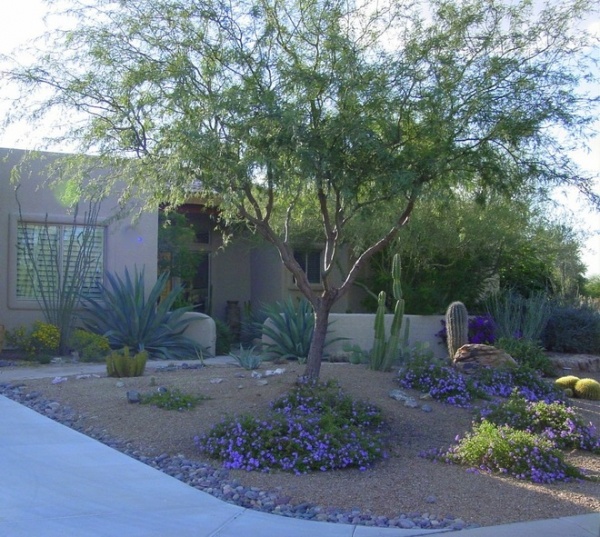
How to test your soil pH. You need to find out the pH of your soil before adding new plants or amendments. Your local garden center or nursery should carry basic soil pH kits that are easy to use and will help you determine whether you have acidic, neutral or alkaline soil. (Neutral soils have a pH of 7; acidic soils, lower than 7; and alkaline soils, higher than 7.)
If your test shows a high pH (over 7.5), you may want to have professional soil testing done, for instance through your county extension office.
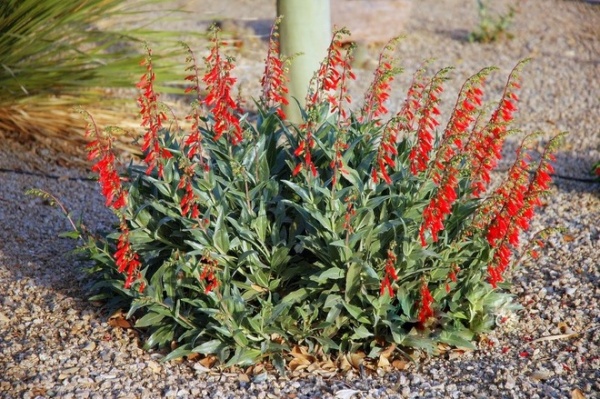
What to Grow in Alkaline Soil
Native plants. If you live in an area with alkaline soil, choose plants that are native to your area. Native plants have adapted to the local soil as well as the climate and will be a low-maintenance choice. In general, plants that are adapted to arid climates and are drought tolerant are likely to handle alkaline soils with no problem.
Browse plants native to the U.S.
Shown: Firecracker penstemon, a Southwestern native
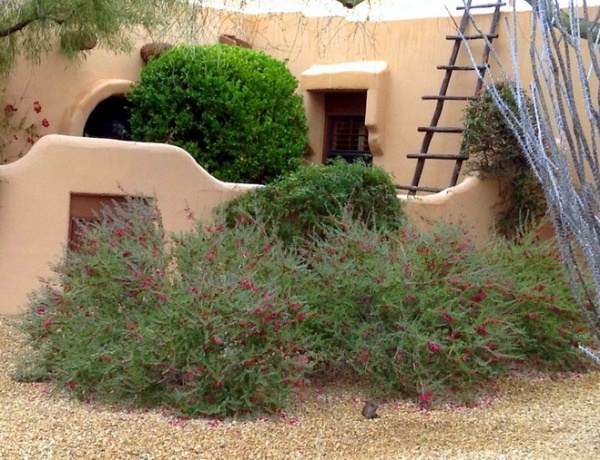
Plants that come from areas with similar climates. While native plants should be your first choice for options that will do well in alkaline soils, plants that come from areas with similar soils and arid climates is another option. Regions include Australia, the Mediterranean and parts of Africa.
Australia: The arid regions of Australia contribute many beautiful flowering plants to the Western plant palette that are tolerant of our alkaline soils, including Blue Bells (Eremophila hygrophana ‘Blue Bells’, USDA zone 8), feathery cassia (Senna artemisioides, zone 8), purple lilac vine (Hardenbergia violaceae, zone 9) and Valentine bush (Eremophila maculata ‘Valentine’, zone 8, shown here).
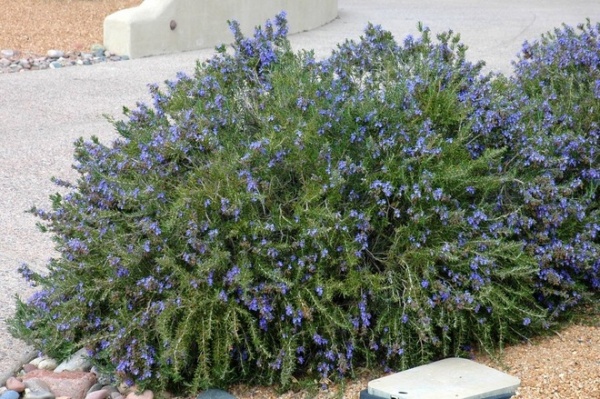
The Mediterranean: Plants from the Mediterranean region of Europe also do well in landscapes with alkaline soil. A few favorites include Jupiter’s beard (Centranthus ruber, zones 4 to 9), lavender (Lavendula spp, zones 6 to 8), rosemary (Rosmarinus officinalis, zones 8 to 10) and yarrow (Achillea millefolium, zones 3 to 10).
Shown: Prostrate rosemary (Rosmarinus officinalis ‘Prostratus’)
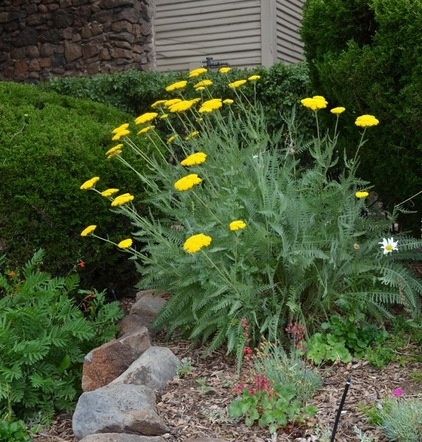
Shown: Moonshine yarrow (Achillea x ‘Moonshine’)
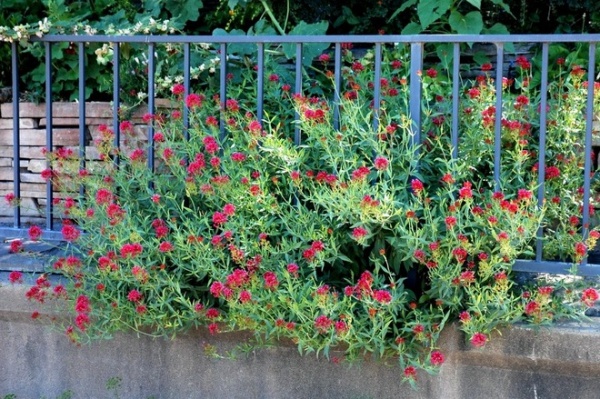
Shown: Jupiter’s beard (Centranthus ruber)
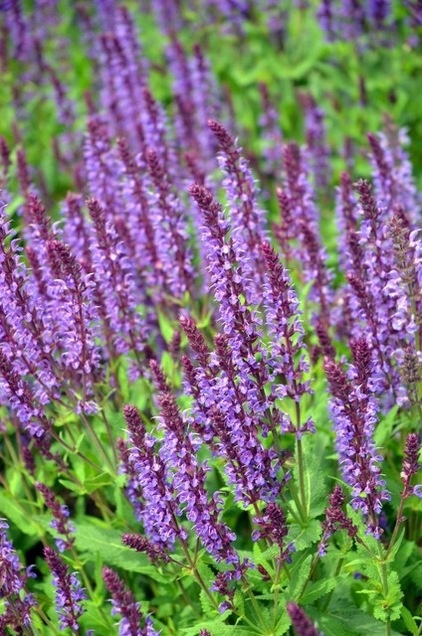
Plants that can handle acidic or alkaline soils. These are a good choice if you don’t know what type of soil you have. Flowering favorites include candytuft (Iberis sempervirens, zones 4 to 8), clematis (Clematis spp, zones 4 to 11), coral bells (Heuchera sanguinea, zones 3 to 9), cranesbill (Geranium sanguineum, zones 4 to 9), meadow sage (Salvia nemorosa, zones 4 to 8), bridal wreath spiraea (Spiraea prunifolia, zones 5 to 9) and weigela rubidor (Weigela florida ‘Rubidor’, zones 4 to 8).
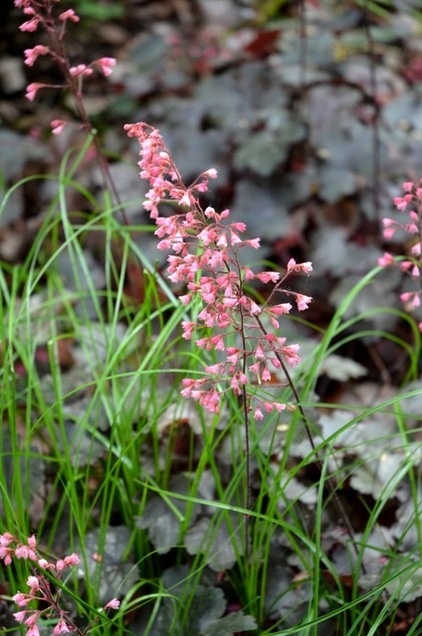
Shown: Coral bells (Heuchera sanguinea)
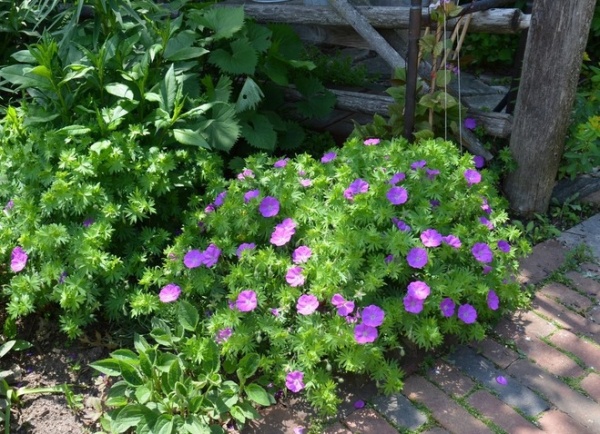
Shown: Cranesbill (Geranium sanguineum)
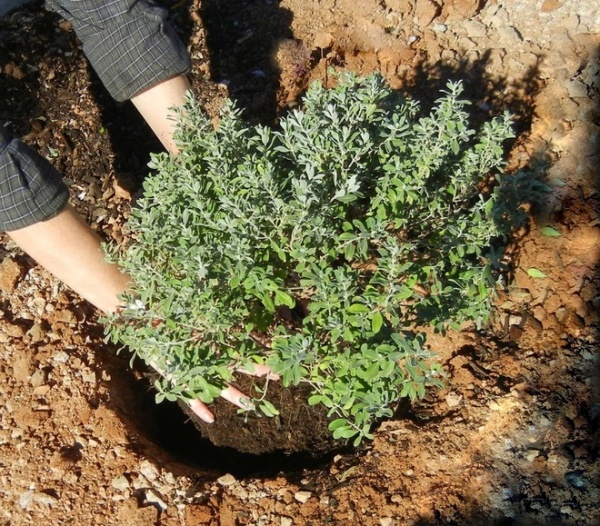
How to Amend Alkaline Soil
If you have alkaline soil and you want to grow plants that prefer a neutral or an acidic soil, you will have to lower the pH of your soil with amendments.
Sulfur. There are several forms of sulfur that are commonly used to help correct highly alkaline soils (with a pH over 7.5). Elemental sulfur can be incorporated into the existing soil and is the least expensive option, but it is also the slowest sulfur option. Be sure to follow the package’s instructions when applying any amendment with sulfur to the soil.
If your plants are showing signs of iron chlorosis (yellowing leaves with green veins), you may want to try iron sulfate instead, which contains both sulfur and iron. Ammonium sulfate is yet another option and contains nitrogen and sulfur. Both iron sulfate and ammonium sulfate work more quickly to help lower soil pH than elemental sulfur.
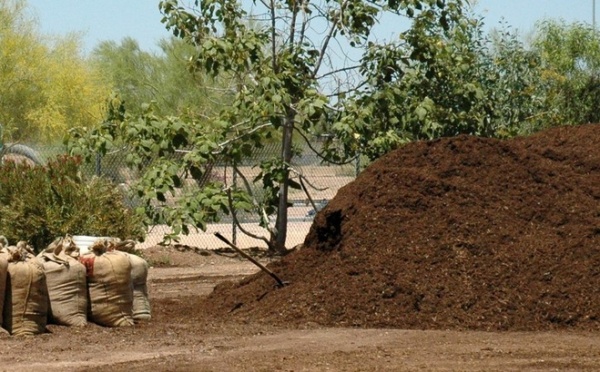
Compost and manure. Incorporate organic matter such as compost or manure into the existing soil before planting as a long-term solution to lower the pH of alkaline soils. Thereafter apply organic mulches such as bark chips, compost, manure and pine needles once or twice a year, which will continue to help keep the pH from climbing too high.
It’s important to note that lowering the pH of alkaline soils is a challenging and continual process of adding amendments. The limestone naturally present in the soil makes it alkaline and constantly releases more lime into the soil. In addition, many of the water sources in the western U.S. are slightly alkaline and contribute to the alkalinity of the soil whenever plants are watered.
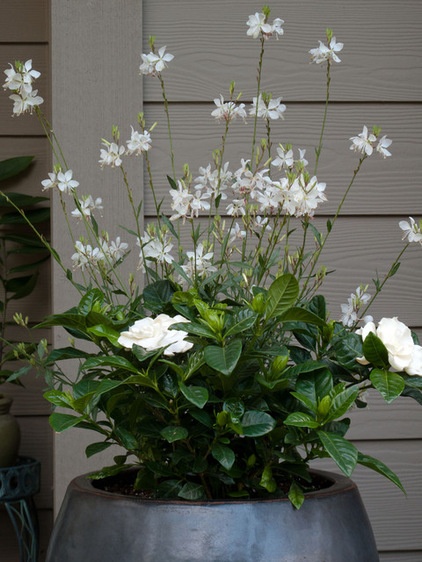
Other Ways to Enjoy Acid-Loving Plants
Despite the challenges of growing acid-loving plants, soil such as azaleas, blueberries, gardenias and rhododendrons, in alkaline soil, some people just have to have them — particularly those who have moved to the West from the East or Southeast. One way to enjoy these plants is to plant them in pots. However, much of the water supply in the West is slightly alkaline, so for best results, feed these plants with an acidifying fertilizer to keep them nice and dark green.
Creating raised beds is also helpful for growing plants that prefer a neutral to slightly acidic pH.
Shown: Gardenia with white gaura (Gaura lindheimeri) grown in a container
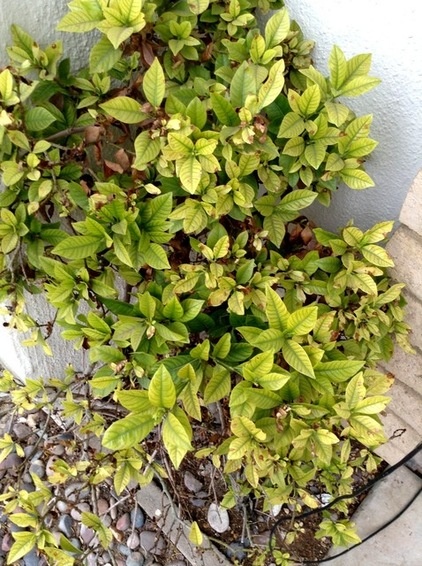
Sadly, too many people try to grow acid-loving plants, like gardenias, in alkaline soil — with disappointing results. Iron chlorosis is the most common symptom of a plant struggling in alkaline soil, characterized by light green or yellow leaves with dark green veins and stunted growth.
While you can certainly add amendments to your alkaline soil on a regular basis to help lower the pH, or garden in containers or raised beds to grow plants that aren’t tolerant of alkaline soil, wouldn’t it be easier to select from the many beautiful plants that thrive in “sweet” soils instead?
Shown: Gardenia suffering from iron chlorosis, planted in alkaline Arizona soil
Browse more Houzz guides to gardening












